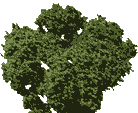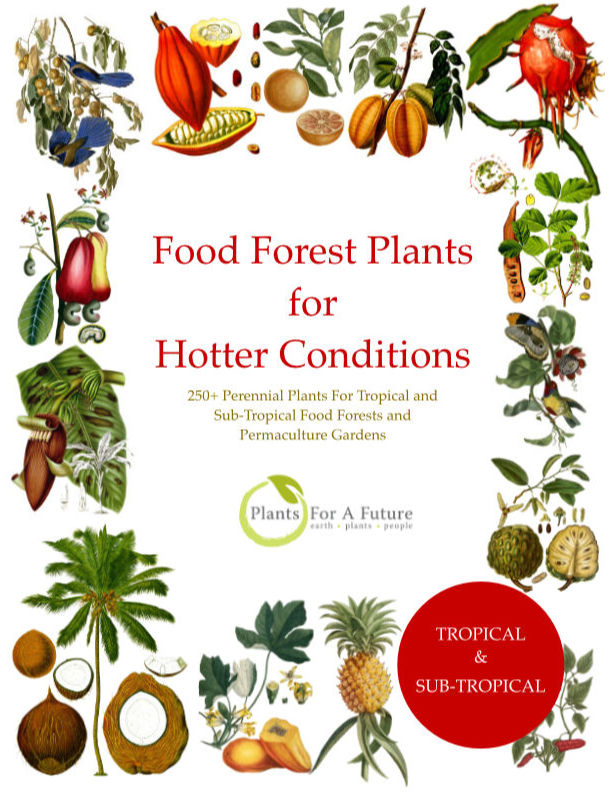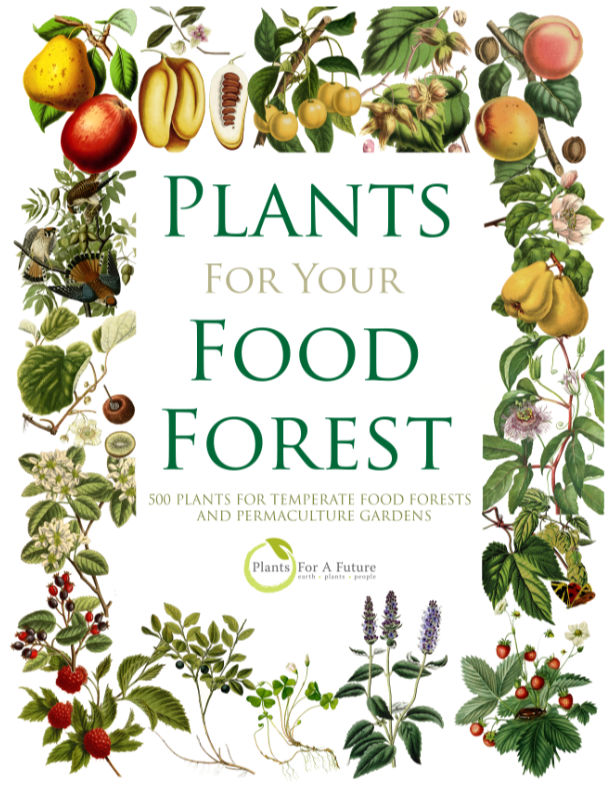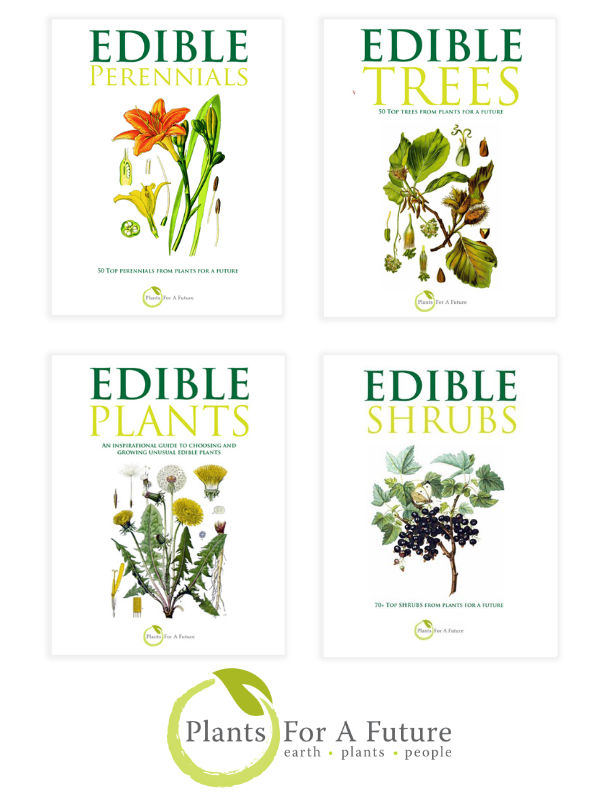Translate this page:
Summary
Creeping Oregon Grape (M. repens) is native to dry, rocky areas of the western United States. The berries are edible, though somewhat tart. It is drought-tolerant and can grow in poor, sandy, or rocky soils. It is used for ground cover. Bloom Color: Yellow. Main Bloom Time: Early spring, Late spring, Mid spring. Form: Prostrate.
Physical Characteristics

 Mahonia repens is an evergreen Shrub growing to 0.3 m (1ft) by 2 m (6ft 7in) at a medium rate.
Mahonia repens is an evergreen Shrub growing to 0.3 m (1ft) by 2 m (6ft 7in) at a medium rate.
See above for USDA hardiness. It is hardy to UK zone 6. It is in leaf all year, in flower from April to May. The species is hermaphrodite (has both male and female organs) and is pollinated by Insects. The plant is self-fertile.
It is noted for attracting wildlife.
Suitable for: light (sandy), medium (loamy) and heavy (clay) soils and can grow in heavy clay soil. Suitable pH: mildly acid, neutral and basic (mildly alkaline) soils. It can grow in semi-shade (light woodland) or no shade. It prefers dry or moist soil.
UK Hardiness Map
US Hardiness Map
Synonyms
M. nana. Berberis nana. B. repens.
Plant Habitats
Woodland Garden Sunny Edge; Dappled Shade; Ground Cover;
Edible Uses
Edible Parts: Fruit Oil
Edible Uses: Oil
Fruit - raw or cooked[85, 183]. An acid flavour but it is rather nice raw, especially when added to muesli or porridge[K]. Unfortunately, there is relatively little flesh and a lot of seeds[K]. Used for making jams. jellies etc. They can also be made into a refreshing lemonade-like beverage[183]. When sugar is added, the fruit juice is similar to grape juice[212]. The fruit is about 9mm in diameter[200].
References More on Edible Uses
Medicinal Uses
Plants For A Future can not take any responsibility for any adverse effects from the use of plants. Always seek advice from a professional before using a plant medicinally.
Alterative Anaphrodisiac Antibacterial Antiseptic Antitumor Cholagogue Depurative Diuretic
Dysentery Expectorant Febrifuge Laxative Salve Tonic
The root and root bark is alterative, anaphrodisiac, antiseptic, cholagogue, depurative, diuretic, expectorant, febrifuge, laxative and tonic[4, 238]. It improves the digestion and absorption and is taken internally in the treatment of coughs, fevers, psoriasis, syphilis, haemorrhages, stomach complaints, kidney problems and impure blood conditions[4, 238, 257]. Externally, it is used as an antiseptic and healing wash or poultice on wounds and rheumatic joints[257]. The roots are harvested in late autumn or early spring and dried for later use[238]. A poultice of the fresh berries has been applied to boils[257]. Berberine, universally present in rhizomes of Mahonia species, has marked antibacterial effects[218] and is used as a bitter tonic[213]. Since it is not appreciably absorbed by the body, it is used orally in the treatment of various enteric infections, especially bacterial dysentery[218]. It should not be used with Glycyrrhiza species (Liquorice) because this nullifies the effects of the berberine[218]. Berberine has also shown antitumour activity[218]. The root and root bark are best harvested in the autumn[213].
References More on Medicinal Uses
The Bookshop: Edible Plant Books
Our Latest books on Perennial Plants For Food Forests and Permaculture Gardens in paperback or digital formats.

Edible Tropical Plants
Food Forest Plants for Hotter Conditions: 250+ Plants For Tropical Food Forests & Permaculture Gardens.
More

Edible Temperate Plants
Plants for Your Food Forest: 500 Plants for Temperate Food Forests & Permaculture Gardens.
More

More Books
PFAF have eight books available in paperback and digital formats. Browse the shop for more information.
Shop Now
Other Uses
Dye Oil Soil stabilization
Agroforestry uses:
Mahonia can be used as a hedge or ornamental plant and provides ground cover. The dense foliage offers shelter for wildlife and beneficial insects, and the berries attract birds.
Landscape Uses: Border, Erosion control, Ground cover, Massing.
A yellow dye is obtained from the inner bark of the stem and roots[155, 257]. It is green[168]. Dark green, violet and dark blue-purple dyes are obtained from the fruit[168]. A green dye is obtained from the leaves[168]. Plants form suckers freely, making a good dense ground cover[11, 200], though they can be slow to become established[197] and will need weeding for their first few years after planting out[K]. The sub-species M. repens rotundifolia has been especially recommended[197]. A useful plant for preventing soil erosion on slopes[155]. 1. Nectary - Flowers rich in nectar and pollen:
Yes – Mahonia species produce clusters of yellow flowers that are rich in nectar and attract a variety of pollinators, especially bees and butterflies.
2. Wildlife - Food (Fruit, Seeds, Leaf litter, Shelter, Nesting, Roosting):
Yes – The berries of Mahonia species are edible for birds and other wildlife, making them an important food source. The dense evergreen foliage also provides excellent shelter for small birds and insects, and it can offer nesting and roosting sites for birds.
3. Invertebrate Shelter (Overwintering sites, Leaf litter, Groundcover):
Yes – The evergreen foliage and rough stems of Mahonia provide overwintering sites for invertebrates. The leaf litter from these plants can create a microhabitat for insects and small ground-dwelling organisms.
4. Pest Confuser (Smell):
No – Mahonia species do not have a particularly strong or confusing scent that would act as a pest deterrent.
Special Uses
Food Forest Ground cover Scented Plants
References More on Other Uses
Cultivation details
An easily grown plant, it thrives in any good garden soil[11], preferring one on the dryish side. Grows well in heavy clay soils. Succeeds in the light shade of trees[K]. This species is hardy to about -15°c if growing in a sheltered position[184]. Established plants sucker freely and form quite dense thickets[200]. The flowers are scented[245]. Resistant to honey fungus[88]. Special Features:
North American native, Attractive flowers or blooms. The plant is heat tolerant in zones 8 through 3. (Plant Hardiness Zones show how well plants withstand cold winter temperatures.
Plant Heat Zones show when plants would start suffering from the heat.
The Plant Heat Zone map is based on the number of "heat days" experienced in a given area where the temperature climbs to over 86 degrees F (30°C).
At this temperature, many plants begin to suffer physiological damage. Heat Zones range from 1 (no heat days) to 12 (210 or more heat days).
For example Heat Zone. 11-1 indicates that the plant is heat tolerant in zones 11 through 1.) For polyculture design as well as the above-ground architecture (form - tree, shrub etc. and size shown above) information on the habit and root pattern is also useful and given here if available. An evergreen. A clumping plant, forming a colony from shoots away from the crown but with a limited spread [1-2]. The root pattern is stoloniferous rooting from creeping stems above the ground [1-2]. The berries are typically harvested in late summer to early autumn when they are fully ripe.
Mahonia flowers in late winter to early spring producing clusters of yellow flowers.
Mahonia species are moderate to fast growers, typically reaching maturity in about 2 to 3 years, depending on the specific species and growing conditions. Mahonia species are generally self-fertile, but cross-pollination can improve fruit set.
References Carbon Farming Information and Carbon Sequestration Information
Temperature Converter
Type a value in the Celsius field to convert the value to Fahrenheit:
Fahrenheit:
The PFAF Bookshop
Plants For A Future have a number of books available in paperback and digital form. Book titles include Edible Plants, Edible Perennials, Edible Trees,Edible Shrubs, Woodland Gardening, and Temperate Food Forest Plants. Our new book is Food Forest Plants For Hotter Conditions (Tropical and Sub-Tropical).
Shop Now
Plant Propagation
Seed - best sown as soon as it is ripe in a cold frame[78]. It usually germinates in the spring[K]. 'Green' seed (harvested when the embryo has fully developed but before the seed case has dried) should be sown as soon as it is harvested and germinates within 6 weeks[K]. Stored seed should be sown as soon as possible in late winter or spring. 3 weeks cold stratification will improve its germination, which should take place in 3 - 6 months at 10°c. Prick out the seedlings when they are large enough to handle and grow them on in a cold frame for at least their first winter. Plant them out in late spring or early summer. Division of suckers in spring[78]. Whilst they can be placed direct into their permanent positions, better results are achieved if they are potted up and placed in a frame until established[11]. Leaf cuttings in the autumn.
Other Names
If available other names are mentioned here
Creeping Oregon Grape, Creeping barberry, Grape Oregon, Mahonia nana. Berberis nana. Berberis repens.
Native Range
NORTHERN AMERICA: Canada, Alberta (south), British Columbia (south), United States, Minnesota (central), Nebraska (northwest), South Dakota (w. & n.e.), Colorado, Idaho, Montana, Oregon, Washington, Wyoming, New Mexico, Texas, Arizona, California (northeast), Nevada, Utah,
Weed Potential
Right plant wrong place. We are currently updating this section.
Please note that a plant may be invasive in one area but may not in your area so it’s worth checking.
Conservation Status
IUCN Red List of Threatened Plants Status :

| Related Plants
|
| Latin Name | Common Name | Habit | Height | Hardiness | Growth | Soil | Shade | Moisture | Edible | Medicinal | Other |
| Mahonia aquifolium | Oregon Grape, Hollyleaved barberry, Oregon Holly Grape, Oregon Holly | Shrub | 2.0 |
4-8
| F | LMH | FSN | DM | 3 | 3 | 3 |
| Mahonia bealei | Beale's barberry, Leatherleaf Mahonia | Shrub | 2.0 |
5-8
| S | LMH | FSN | M | 3 | 2 | 0 |
| Mahonia confusa | | Shrub | 1.5 |
6-9
| | LMH | FS | M | 3 | 2 | |
| Mahonia flavida | | Shrub | 2.0 |
7-10
| | LMH | FSN | M | 2 | 0 | |
| Mahonia fortunei | Fortune's Mahonia | Shrub | 2.0 |
7-9
| S | LMH | FSN | M | 3 | 2 | |
| Mahonia fremontii | Mahonia, Fremont's mahonia | Shrub | 2.5 |
7-10
| S | LMH | N | DM | 3 | 2 | 2 |
| Mahonia ganpinensis | | Shrub | 0.0 |
-
| | LMH | SN | M | 1 | 2 | |
| Mahonia gracilipes | | Shrub | 1.5 |
6-9
| | LMH | FS | M | 2 | 2 | |
| Mahonia gracilis | Mexican Barberry | Shrub | 1.5 |
7-10
| | LMH | N | DM | 2 | 0 | |
| Mahonia haematocarpa | Mexican Barberry, Red barberry | Shrub | 3.6 |
7-10
| | LMH | N | DM | 3 | 2 | 2 |
| Mahonia japonica | | Shrub | 2.0 |
5-9
| | LMH | FSN | M | 3 | 2 | |
| Mahonia lomariifolia | Chinese hollygrape | Shrub | 5.0 |
8-9
| M | LMH | SN | M | 3 | 2 | 0 |
| Mahonia napaulensis | | Shrub | 2.5 |
5-9
| | LMH | SN | M | 3 | 2 | 1 |
| Mahonia nervosa | Oregon Grape, Cascade barberry | Shrub | 0.6 |
5-9
| M | LMH | FSN | DM | 3 | 2 | 3 |
| Mahonia nevinii | Nevin's barberry | Shrub | 2.4 |
7-10
| | LMH | N | DM | 3 | 2 | 2 |
| Mahonia pinnata | California Barberry, Wavyleaf barberry, Island barberry, Creeping Holly Grape | Shrub | 1.8 |
7-8
| F | LMH | SN | M | 3 | 2 | 2 |
| Mahonia pumila | Dwarf Barberry | Shrub | 0.3 |
6-9
| S | LM | SN | DM | 3 | 2 | 3 |
| Mahonia swaseyi | Texas Mahonia, Texas barberry | Shrub | 2.5 |
7-10
| | LMH | N | DM | 3 | 2 | |
| Mahonia trifoliolata | Mexican Barberry, Algerita | Shrub | 2.0 |
6-9
| | LMH | N | DM | 3 | 2 | 4 |
| Mahonia x media | | Shrub | 2.0 |
6-9
| | LMH | FSN | M | 3 | 2 | 0 |
|
Growth: S = slow M = medium F = fast. Soil: L = light (sandy) M = medium H = heavy (clay). pH: A = acid N = neutral B = basic (alkaline). Shade: F = full shade S = semi-shade N = no shade. Moisture: D = dry M = Moist We = wet Wa = water.
Expert comment
Author
(Lindl.)G.Don.
Botanical References
11200
Links / References
For a list of references used on this page please go here
Readers comment
| Add a comment |
|
If you have important information about this plant that may help other users please add a comment or link below. Only comments or links that are felt to be directly relevant to a plant will be included. If you think a comment/link or information contained on this page is inaccurate or misleading we would welcome your feedback at admin@pfaf.org. If you have questions about a plant please use the Forum on this website as we do not have the resources to answer questions ourselves.
* Please note: the comments by website users are not necessarily those held by PFAF and may give misleading or inaccurate information.
To leave a comment please Register or login here All comments need to be approved so will not appear immediately.
|